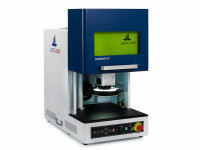Future and trends in interior design
The role of the laser cutter
The world of interior design is constantly changing and encompasses a wide range of styles and technological advances. With the emergence of new trends such as sustainability, customization, smart homes and minimalism, the industry is undergoing an exciting transformation. One key technology that is playing a significant role in this evolution is the laser cutter.
The development of interior design is significantly influenced by technological progress. One particularly exciting tool that plays a decisive role in this is the laser cutter. This innovative device offers numerous advantages for designers and manufacturers in the field of interior design.
Thanks to its precision and versatility, the laser cutter makes it possible to create unique and detailed designs that were previously difficult to realize. It also has a significant influence on current trends by opening up creative possibilities and making new design concepts possible. From intricate patterns to individual pieces of furniture - the possible applications of the laser cutter in interior design are diverse and inspiring. With the laser cutter, materials such as wood, acrylic glass or fabrics can be cut with millimetre precision, resulting in the perfect execution of the most creative ideas. This results in unique and tailor-made furnishings that take interior design to a new level.
Megatrends in interior design
- Sustainability: The trend towards sustainability is stronger than ever as consumers and designers alike seek environmentally friendly solutions. Laser cutters enable the use of sustainable materials such as bamboo, recycled metal or recycled plastic. This technology supports precise and efficient material processing, which reduces waste and makes production more resource-efficient.
- Individualization: In a world where customers are increasingly looking for products that are specifically tailored to their needs and wishes, laser cutters offer an outstanding solution. They allow the creation of customized furniture and decorative items. From personalized patterns to uniquely designed furnishings - laser technology makes it possible.
- Smart Home: The smart home concept is revolutionizing the way we live. Laser cutters play a crucial role in integrating technology into living spaces. They can create precise cut-outs and embeddings for lighting systems and electronic components, enabling seamless integration into furniture and décor.
- Minimalism: This style emphasizes simplicity and functionality, which is reflected in clean lines and a reduced design language. Laser cutters are ideal for creating minimalist designs that are not only aesthetically pleasing but also functional.
Tips for integrating the laser cutter into the interior design
To successfully integrate the laser cutter into interior design, it is important to think creatively and take an innovative approach. One tip is to use the laser cutter specifically for individual designs and customized elements to create a unique look.
You can also use the laser cutter to process different materials such as wood, glass or even fabric to create interesting textures and patterns. It is also worth experimenting with lighting effects by using the laser cutter to create unusual lampshades or wall decorations.
The integration of the laser cutter opens up many creative possibilities to take interior design to a new level and create unique accents. With a little experimentation and a flair for aesthetics, there are no limits to your imagination.
The future of interior design is closely linked to the development and integration of new technologies such as laser cutting. This tool opens up new horizons for sustainability, personalization, technological integration and minimalist design, making it an indispensable part of modern design solutions. The impact of laser cutting on interior design is clear and will continue to grow in importance as it redefines the way spaces are designed and personalized.



